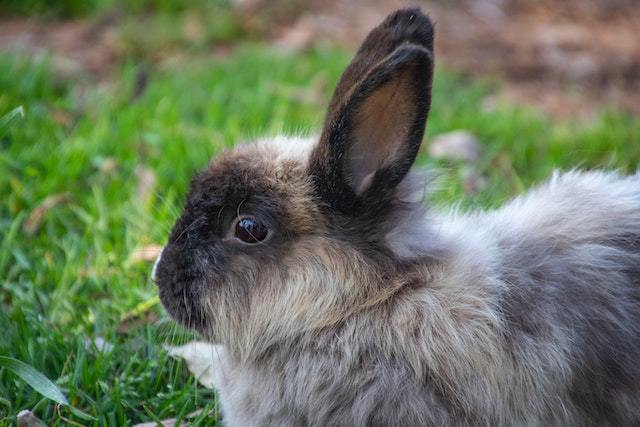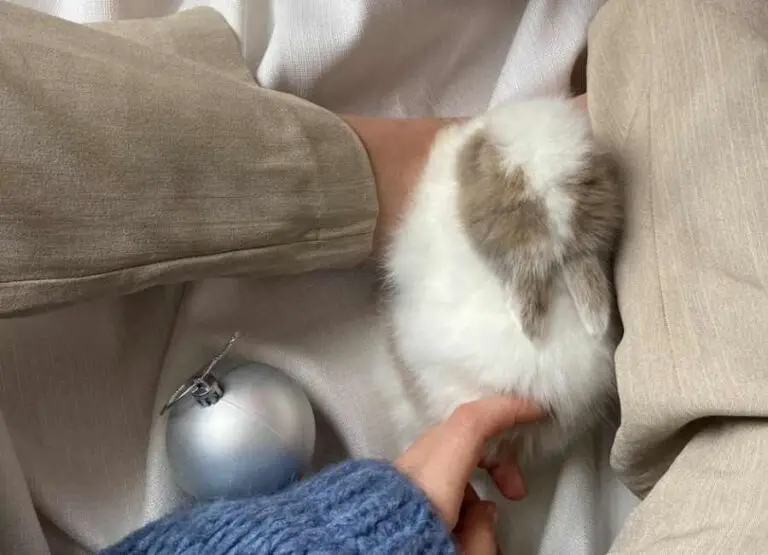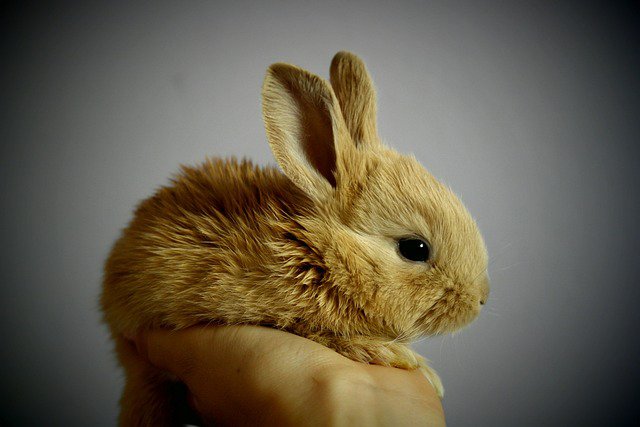14 Common Health Problems in Rabbits With Hints

Let’s discuss the most common health problems in rabbits…
Today, let’s dive into the world of rabbits and explore some common health problems they may face.
So, if you have a fluffy friend hopping around your home, this blog post is a must-read to ensure their well-being and happiness.
Let’s hop right in!
Common Health Problems in Rabbits
Common health problems in rabbits include dental issues, such as overgrown teeth or malocclusion, which can cause pain and difficulty in eating.
Gastrointestinal stasis, a condition where the digestive system slows down or stops, is another common problem that can lead to bloating, loss of appetite, and potentially fatal complications.
Finally, respiratory problems, such as snuffles or pneumonia, can occur in rabbits, causing symptoms like sneezing, nasal discharge, and difficulty breathing.
Let’s dive deeper…
The following are some of the most common health problems in rabbits:
1. Gastrointestinal Stasis (GI Stasis)
Gastrointestinal stasis, also known as GI stasis, is a common health problem in rabbits. It occurs when there is a decrease in the movement of food through the digestive system, leading to a slowdown or stoppage of the normal digestive process.
The causes of GI stasis in rabbits can vary, but some common factors include a diet low in fiber, dehydration, stress, lack of exercise, and dental problems.
Symptoms of GI stasis in rabbits include a decrease or absence of appetite, reduced or no fecal production, bloating or distended abdomen, and lethargy.
Treatment for GI stasis typically involves addressing the underlying causes. This can include providing a high-fiber diet, encouraging hydration, promoting exercise, and addressing any dental issues.
In severe cases, veterinary intervention may be necessary, which can involve the administration of medications to stimulate gut motility.
To prevent GI stasis in rabbits, it is important to provide a diet rich in high-quality hay and fresh vegetables, ensure access to clean water at all times, and offer opportunities for exercise and mental stimulation.
2. Dental Issues
Dental issues are common health problems in rabbits and can arise from several causes. One primary cause is overgrown teeth, which occurs when a rabbit’s teeth do not wear down properly. Other causes include malocclusion, tooth root abscesses, and dental spurs.
Symptoms of dental issues in rabbits include drooling, loss of appetite, weight loss, and difficulty eating or drinking. Rabbits may also exhibit signs of pain or discomfort, such as teeth grinding or rubbing their face.
Treatment for dental issues may involve trimming or filing the teeth to correct overgrowth, extracting infected teeth, or administering antibiotics for abscesses. Pain management and supportive care, such as softening food or providing hay alternatives, may also be necessary.
Preventing dental problems in rabbits involves providing a diet rich in fiber, such as hay and fresh vegetables, which helps wear down their teeth naturally.
Regular veterinary check-ups are essential to catch any dental issues early on. Additionally, providing appropriate chew toys and avoiding feeding sugary or starchy foods can help maintain dental health in rabbits.
3. Snuffles (Pasteurellosis)
Snuffles, also known as Pasteurellosis, is a common health problem in rabbits. It is caused by the bacteria Pasteurella multocida, which can be present in the nasal passages of healthy rabbits.
However, certain factors such as stress, overcrowding, poor ventilation, and a weakened immune system can trigger the bacteria to multiply and cause infection.
The symptoms of Snuffles in rabbits include sneezing, nasal discharge (which can be thick and yellowish), difficulty breathing, loss of appetite, lethargy, and in severe cases, abscesses or infections in the eyes, ears, or respiratory system.
Treatment options for Snuffles include antibiotics prescribed by a veterinarian, such as enrofloxacin or trimethoprim-sulfa.
It is important to complete the full course of antibiotics to ensure complete eradication of the bacteria. In severe cases, supportive care like nebulization or fluid therapy may be necessary.
Prevention of Snuffles involves maintaining good hygiene in the rabbit’s living environment, providing proper ventilation, reducing stress, and avoiding overcrowding.
Regular veterinary check-ups and vaccinations can also help to prevent the onset of Snuffles. Additionally, quarantine new rabbits before introducing them to an existing rabbit population to prevent the spread of the bacteria.
4. Myxomatosis
Myxomatosis is a viral disease that affects rabbits and is caused by the Myxoma virus. It is primarily spread through biting insects, such as fleas and mosquitoes. The virus is introduced into the rabbit’s system through these insect vectors.
The symptoms of Myxomatosis include swelling and inflammation of the eyes, nose, and genitals, as well as the formation of skin lumps or nodules. Affected rabbits may also experience difficulty breathing, loss of appetite, and lethargy. In severe cases, it can lead to death.
Unfortunately, there is no specific treatment for Myxomatosis. Supportive care, such as providing pain relief and ensuring proper nutrition and hydration, can help improve the rabbit’s comfort and overall well-being. However, the disease often progresses rapidly, and the mortality rate is high.
Prevention is crucial in managing Myxomatosis. Vaccination is an effective method to reduce the risk of infection. Additionally, controlling insect populations and minimizing exposure to insect vectors can help prevent the spread of the virus.
Quarantining new rabbits and implementing strict biosecurity measures can also play a role in preventing the disease from entering a rabbit population.
5. Coccidiosis
Coccidiosis is a common health problem in rabbits caused by a microscopic parasite known as coccidia. These parasites are typically found in the rabbit’s digestive tract and can cause severe intestinal damage if left untreated.
The primary cause of coccidiosis in rabbits is through the ingestion of contaminated food or water. It can also be transmitted through contact with infected feces.
Symptoms of coccidiosis include diarrhea, weight loss, lethargy, and a decrease in appetite. In severe cases, it can lead to dehydration and even death.
To treat coccidiosis, veterinarians often prescribe medications such as sulfonamides or amprolium. These medications help to eliminate the parasites and restore the rabbit’s intestinal health.
Prevention of coccidiosis involves maintaining clean and hygienic living conditions for the rabbits. Regularly cleaning and disinfecting their cages, providing fresh and uncontaminated food and water, and minimizing exposure to infected animals can greatly reduce the risk of coccidiosis.
Additionally, incorporating a balanced diet and promoting good hygiene practices can also help strengthen the rabbit’s immune system against coccidia.
6. Rabbit Viral Hemorrhagic Disease
Rabbit viral hemorrhagic disease (RVHD) is a highly contagious and often fatal health problem in rabbits. It is caused by a calicivirus, specifically the Rabbit Hemorrhagic Disease Virus (RHDV). The virus is spread through direct contact with infected rabbits, contaminated objects, or even insects.
Symptoms of RVHD include sudden death without any prior signs, fever, loss of appetite, lethargy, and bleeding from the nose or mouth. The disease progresses rapidly, and affected rabbits may die within 12-36 hours.
Currently, there is no specific treatment for RVHD. Supportive care, such as fluid therapy and pain management, can be provided to affected rabbits. However, prevention is key.
Vaccination is the most effective way to protect rabbits from RVHD. Regular vaccination, starting at a young age, is recommended. Additionally, practicing good hygiene, maintaining a clean environment, and avoiding contact with wild rabbits can help prevent the spread of the disease.
7. Obesity
Obesity is a significant health problem in rabbits, just as it is in humans and other animals. It occurs when a rabbit consumes more calories than it burns, leading to an excess accumulation of body fat.
The main causes of obesity in rabbits are overfeeding, lack of exercise, and feeding an imbalanced diet high in carbohydrates and low in fiber.
Symptoms of obesity in rabbits include difficulty moving, reduced activity levels, and a visible layer of fat over the body. Treatment options for obese rabbits involve a combination of dietary changes and increased exercise.
Reducing the amount of food offered and providing a diet high in fiber, such as hay and fresh vegetables, can help manage weight. Encouraging physical activity through playtime and providing ample space for movement are also crucial.
Preventing obesity in rabbits involves feeding a balanced diet rich in fiber, limiting the intake of treats and high-calorie foods, and promoting regular exercise. Monitoring the rabbit’s weight and body condition can help identify any potential weight gain early on, allowing for prompt intervention.
8. Ear Mites
Ear mites are a common health issue in rabbits caused by the microscopic parasite, Psoroptes cuniculi. These parasites can be transmitted from one rabbit to another through direct contact.
Symptoms of ear mites in rabbits include excessive scratching of the ears, head shaking, and the presence of a dark, waxy discharge in the ear canal. In severe cases, the rabbit may develop secondary infections or even hearing loss.
To treat ear mites, it is crucial to consult a veterinarian for a proper diagnosis. The vet may prescribe topical anti-parasitic medications or administer injections to eliminate the mites. Regular cleaning of the rabbit’s ears may also be recommended.
Prevention of ear mites can be achieved by maintaining good hygiene in the rabbit’s living environment. Regularly clean and disinfect their living quarters, and avoid contact with other rabbits that may be infested with mites. Additionally, routine check-ups with a veterinarian can help detect and address any early signs of infestation.
9. Conjunctivitis and Eye Infections
Conjunctivitis and eye infections are common health problems in rabbits. They can occur due to various reasons, including bacterial or viral infections, allergies, or injuries. Symptoms of conjunctivitis and eye infections in rabbits include redness, swelling, discharge, and excessive tearing.
To treat conjunctivitis and eye infections in rabbits, it is important to consult a veterinarian for proper diagnosis and medication. Treatment options may include antibiotic or antiviral eye drops or ointments, as well as pain relief medication if necessary.
Preventive measures for these health problems involve maintaining a clean and hygienic living environment for the rabbits.
Regularly cleaning their cages, providing fresh water, and avoiding exposure to dusty or allergenic substances can help prevent eye infections. Additionally, avoiding contact with sick rabbits and ensuring a balanced diet with adequate vitamin A can boost the rabbit’s immune system and reduce the risk of eye infections.
10. Flystrike
Flystrike, also known as myiasis, is a severe health problem that can affect rabbits. It occurs when flies lay eggs on the rabbit’s fur, which then hatch into maggots. The warm and moist environment created by urine or feces-soaked fur attracts flies, making rabbits vulnerable to this condition.
Symptoms of flystrike include foul odor, restlessness, loss of appetite, and visible maggots on the rabbit’s body. If left untreated, it can lead to serious infections, tissue damage, and even death.
To treat flystrike, it is crucial to seek veterinary assistance immediately. The affected rabbit will require careful cleaning of the affected area, removal of maggots, and treatment of any underlying infections. Pain relief medications and antibiotics may also be prescribed to aid in the recovery process.
Prevention is key to avoiding flystrike. Regularly inspecting and cleaning the rabbit’s living environment, as well as maintaining proper hygiene, are essential.
Additionally, ensuring that the rabbit’s fur remains dry and clean can help reduce the risk of flystrike. Using fly repellents or fly screens in the rabbit’s living space can also be beneficial in preventing flies from reaching the rabbit.
11. Hairballs (Trichobezoars)
Hairballs, also known as trichobezoars are a common health problem in rabbits. They occur when rabbits ingest a significant amount of fur while grooming themselves. The fur then forms a clump in their digestive system, leading to potential blockages.
Symptoms of hairballs in rabbits may include decreased appetite, weight loss, lethargy, and a decrease in fecal production. In severe cases, rabbits may even show signs of pain or discomfort.
To treat hairballs, it is important to seek veterinary assistance. A veterinarian may recommend medications to help break down the hairball, or they may perform a surgical procedure to remove it.
Preventing hairballs in rabbits involves regular grooming to minimize the amount of loose fur available for ingestion. Brushing your rabbit’s coat regularly will help remove loose fur and reduce the risk of hairball formation.
Providing plenty of hay in their diet can also aid in proper digestion and prevent hairball formation. Additionally, ensuring a healthy diet with adequate fiber and hydration can help maintain a healthy digestive system and reduce the likelihood of hairballs.
12. Respiratory Tract Infections
Respiratory tract infections are a common health problem in rabbits. They can occur due to various causes, including bacterial or viral infections, environmental factors, or stress.
Symptoms of respiratory tract infections in rabbits may include sneezing, nasal discharge, difficulty breathing, coughing, and lethargy.
When it comes to treatment options, it is crucial to consult a veterinarian for a proper diagnosis and guidance. The treatment may involve antibiotics, supportive care, and addressing any underlying causes such as improving the rabbit’s living conditions.
Preventing respiratory tract infections in rabbits involves several measures. Firstly, maintaining a clean and well-ventilated environment is essential. Regularly cleaning the rabbit’s living area, minimizing dust and allergens, and avoiding exposure to cigarette smoke can help reduce the risk.
Additionally, providing a balanced diet, ensuring proper hydration, and reducing stress levels are important for maintaining a strong immune system in rabbits, which can help prevent respiratory infections.
Lastly, regular check-ups with a veterinarian and prompt treatment of any respiratory symptoms can also contribute to preventing respiratory tract infections in rabbits.
13. Tularemia
Tularemia is a health problem that can affect rabbits. It is caused by the bacterium Francisella tularensis. The bacteria can enter the rabbit’s body through various routes, including ingestion of contaminated food or water, inhalation of contaminated dust or droplets, or through the bites of infected insects or ticks.
Symptoms of tularemia in rabbits include fever, lethargy, loss of appetite, swollen lymph nodes, and respiratory distress. In severe cases, rabbits may develop abscesses or ulcers on their skin or internal organs.
Treatment for tularemia in rabbits typically involves the administration of antibiotics, such as streptomycin or gentamicin, under the guidance of a veterinarian. It is important to start treatment as soon as possible to prevent complications and improve the rabbit’s chances of recovery.
To prevent tularemia in rabbits, it is crucial to maintain good hygiene practices, such as regularly cleaning and disinfecting their living areas.
Additionally, it is important to control vectors, such as insects and ticks, that can transmit the bacteria. Keeping rabbits away from potentially contaminated water sources and providing them with a balanced diet can also help support their immune system and reduce the risk of infection.
14. Cancer
Cancer is a significant health problem in rabbits, although it is relatively rare compared to other species. The exact causes of cancer in rabbits are not well understood, but certain factors such as genetics, age, and environmental factors may contribute to its development.
Symptoms of cancer in rabbits can vary depending on the type and location of the tumor. Common signs include abnormal growths or lumps, weight loss, decreased appetite, difficulty breathing, and changes in behavior or activity levels.
Treatment options for cancer in rabbits may include surgical removal of tumors, chemotherapy, or radiation therapy. However, the success of these treatments can vary, and it is essential to consult with a veterinarian experienced in rabbit care.
Preventing cancer in rabbits can be challenging, but maintaining a healthy diet, providing a clean and stress-free environment, and regular veterinary check-ups can help minimize the risk.
Additionally, avoiding exposure to potential carcinogens and genetic screening can also be beneficial in preventing certain types of cancer in rabbits.
Read more about identifying a sick rabbit.
Conclusion
In conclusion, rabbits can experience various health issues, but with proper care and attention, many of these problems can be prevented or managed.
Remember to provide a balanced diet, regular exercise, and a clean living environment to keep your furry friend healthy.
By being proactive and observant, you can ensure a long and happy life for your beloved bunny companion.


![How to Comfort a Dying Rabbit [12 Helpful Strategies] How to Comfort a Dying Rabbit](https://petcreeks.com/wp-content/uploads/2023/10/How-to-Comfort-a-Dying-Rabbit.jpg)

![12 Common Signs Your Rabbit Is Dying [Comfort Them] Signs Your Rabbit is Dying](https://petcreeks.com/wp-content/uploads/2023/10/rabbit-905971_640.jpg)

![12 Abnormal Rabbit Behaviour [Meaning & Tips] Abnormal Rabbit Behaviour](https://petcreeks.com/wp-content/uploads/2023/10/pexels-magda-ehlers-9348913.jpg)